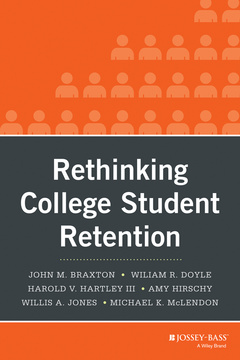Description
Rethinking College Student Retention
Authors: Braxton John M., Doyle William R., Hartley Harold V., Hirschy Amy S., Jones Willis A., McLendon Michael K.
Language: English
Subject for Rethinking College Student Retention:
Approximative price 49.14 €
In Print (Delivery period: 12 days).
Add to cart320 p. · 16x23.6 cm · Hardback
Description
/li>Contents
/li>Biography
/li>
John M. Braxton is professor of education in the Higher Education Leadership and Policy Program in the Department of Leadership, Policy, and Organizations at Peabody College, Vanderbilt University. He is the editor of the Journal of College Student Development and a past president of the Association for the Study of Higher Education (ASHE).
William R. Doyle is associate professor of higher education and coordinator of the Higher Education Leadership Program at Vanderbilt University.
Harold V. Hartley III is senior vice president of the Council of Independent Colleges. His responsibilities includes oversight of CIC's research and assessment and vocation initiatives.
Amy S. Hirschy is assistant professor at the University of Louisville with a joint appointment in the Department of Educational and Counseling Psychology, Counseling, and College Student Personnel and the Department of Educational Leadership, Foundations, and Human Resource Education.
Willis A. Jones is assistant professor of higher education at the University of Kentucky.
Michael K. McLendon is professor of higher education policy and leadership and the associate dean at the Simmons School of Education and Human Development at Southern Methodist University.




